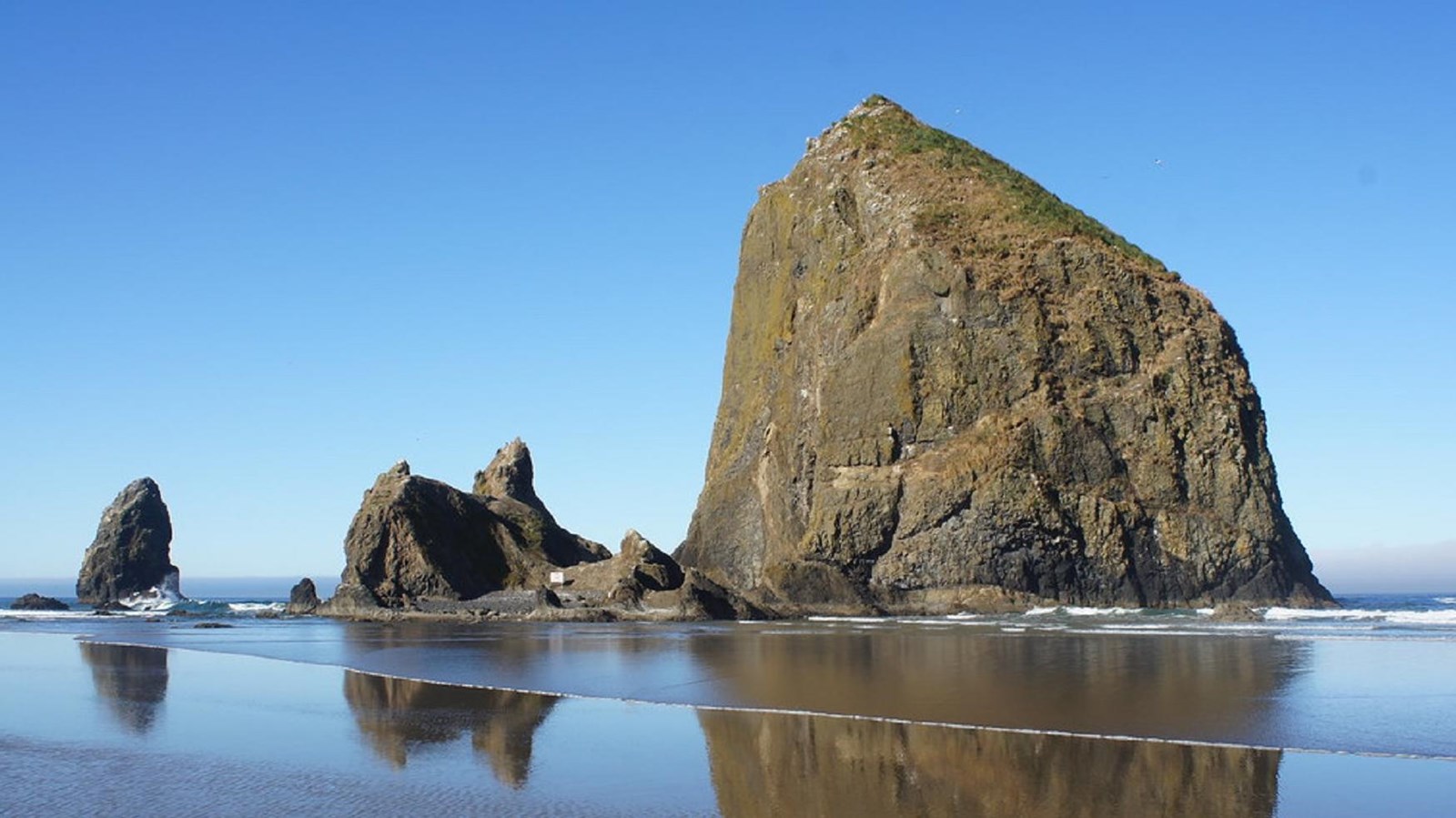Last updated: November 1, 2021
Place
Haystack Rock at the Oregon Islands National Wildlife Refuge

"Haystack Rock, Cannon Beach, Oregon" by Tjflex2 is licensed under CC BY-NC-ND 2.0
Beach/Water Access, Scenic View/Photo Spot
Lewis and Clark NHT Visitor Centers and Museums
This map shows a range of features associated with the Lewis and Clark National Historic Trail, which commemorates the 1803-1806 Lewis and Clark Expedition. The trail spans a large portion of the North American continent, from the Ohio River in Pittsburgh, Pennsylvania, to the mouth of the Columbia River in Oregon and Washington. The trail is comprised of the historic route of the Lewis and Clark Expedition, an auto tour route, high potential historic sites (shown in black), visitor centers (shown in orange), and pivotal places (shown in green). These features can be selected on the map to reveal additional information. Also shown is a base map displaying state boundaries, cities, rivers, and highways. The map conveys how a significant area of the North American continent was traversed by the Lewis and Clark Expedition and indicates the many places where visitors can learn about their journey and experience the landscape through which they traveled.
Within the refuge are 1,853 rocks, reefs, and islands, all of which have been designated National Wilderness Areas. One of the most iconic and recognizable of these is Haystack Rock in Cannon Beach, Oregon. On January 8, 1806, William Clark and a few other men of the Lewis and Clark Expedition had arrived in the area searching for a blue whale that the local tribes had reported to them. They were hoping to harvest a bit of meat from the carcass to bolster their dwindling supplies, but it was not to be. When they found the animal, the 105-foot-long behemoth was indeed laying net to Haystack Rock, but it was little more than a skeleton. A few days later, when the men returned to Fort Clatsop, another expedition member who had remained behind with Meriwether Lewis and the rest of the party, Joseph Whitehouse, recorded their report in his journal on January 10, 1806, saying:
Rising 235 feet above the shoreline, Haystack Rock is an irregular basalt formation that was first created some 17 million years ago as lava flowed through the old Columbia River drainage system and intruded into soft marine sediments. Erosion and geologic uplift eventually revealed it and the many other large stone formations along the coast.“…In the evening late Captain Clark & some of the party returned to the Fort. they informed us that they had been about 25 Miles along the Sea Coast, nearly a South course to see the Whale, [16] expecting to get some of the Meat of it, and that they had to pass over rough rockey mountains, [17] to get to the place where the whale lay, & that the Indians had showed them, to where a whale lay; which had been a long time Dead, which was on a very large Rock. It was about 105 feet long & every way proportionable. the head was shaped they said like the bow of a Vessell nearly. The party got some of the Jaw bones &ca…”
Today, Haystack Rock is protected as one of Oregon’s seven Marine Gardens. It’s a popular location for tidepooling and, at low tide, visitors can walk right up to the enormous rock. A wide variety of birds can also be seen year-round. Gray Whales, Humpback Whales, Orcas, and Sperm Whales are often spotted from December to March. Visitors are encouraged to bring binoculars, spotting scopes, and cameras if they want to spot some of the giant creatures out in the water.
The Haystack Rock Awareness Program presents interpretive programs from February to late October. Program schedules are available from City Hall, local businesses, and the Chamber of Commerce Information Center. For more information on visiting, see the city’s website at Oregon Coast Haystack Rock in Cannon Beach Oregon.
